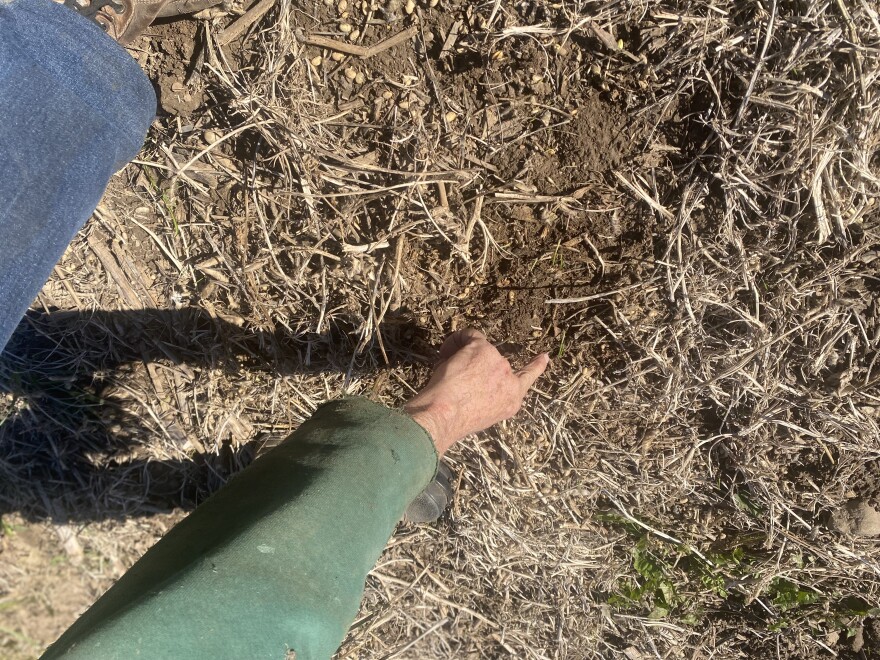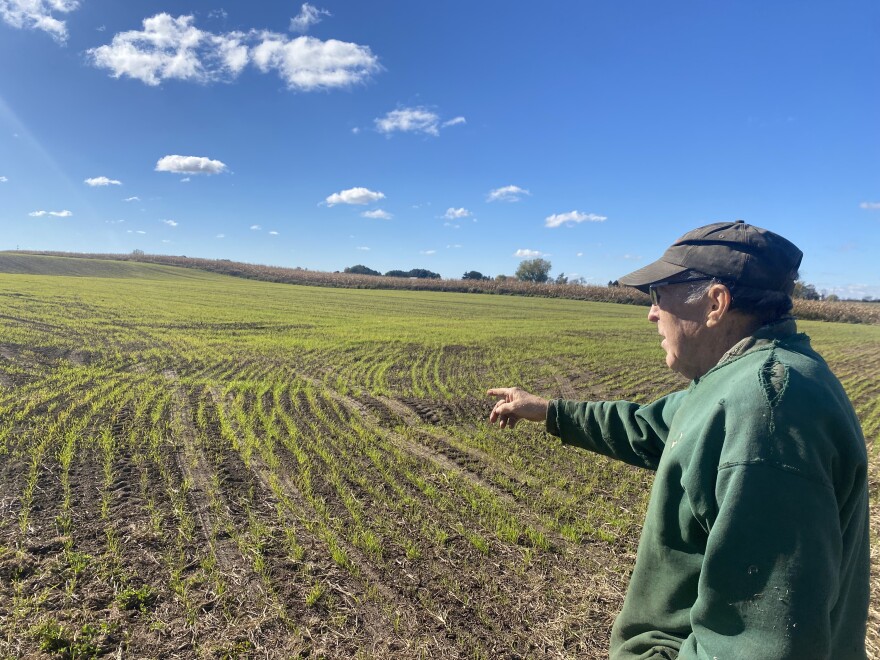Climate change is transforming Wisconsin’s agricultural landscape.
Weather events such as extreme rain, wetter springs and falls, warmer winters and hotter summers, and droughts are among the impacts, according to the Wisconsin Initiative on Climate Change Impacts (WICCI).
With the annual U.N. Climate Change Conference about to kick off in Brazil, WUWM is looking at attitudes toward climate change in Wisconsin. We’re talking to people whose jobs or hobbies put them up close and personal with the outdoors.
A survey earlier this year of more than 900 farmers across Wisconsin found that a majority are concerned about climate change. The survey came from the University of Wisconsin–Madison Soil Health & Agroecological Living Lab, or SHALL.
"This has become such a polarized issue, often quite politicized in that polarization," says Michael Bell, professor of Community and Environmental Sociology, and co-lead of SHALL. "And we had expected that fewer farmers would be concerned about climate change than said they were. But we had 56% of the sample said that they believe climate change is happening, 26% believe it is not happening, and 18% are unsure."
Bell welcomed these results. He says he was delighted to find that the majority of farmers agree that climate change is happening.
He says the survey did not ask what reasons farmers had to believe climate change was happening or not, but, "Farmers are very close to the consequences of this. It affects what your business is. As to, for example, not just whether it’s getting warmer in the sense of global warming, but the other consequences of climate change too, which is more frequent, intense rainfalls, which can have huge effects on a farm."
Les Danielson is a fourth-generation dairy and grain farmer in Chippewa County. He agrees with Bell’s assessment.
"When you have some of these larger rain events, let’s say 4 inches plus at any time, it can really be damaging to our fields if we don’t have a good crop growing on them; if we’ve just planted corn or soybeans and they haven’t gotten very high up yet or if they haven’t sprouted, you’ll end up with a lot more erosion," Danielson says. "So, 1- or 2-inch rain is what we’re used to, but if you get 3, 4, 5 inches at a time — you know, we’ve had two 5.5-inch rains here over the last, let’s say, six years — that does an exponential amount of damage."
Danielson grows nearly 700 acres of corn, soybeans and alfalfa.
He says while he wouldn’t pin climate change as the driver of one storm in particular.
"I think it’s pretty obvious if you look as I’ve been farming for over 30 years, that we’ve had more frequent, more intense rain events over the last, say 5-8 years. Possible localized flooding on some of our fields that we did not have years ago. Certainly, the frequency and the number we’ve had I think is pointing that something is different than it used to be," he says.
To adapt to some of the changes, Danielson says one of the practices he’s incorporated is cover cropping. That’s when farmers plant crops to cover the soil rather than for the purpose of being harvested. Cover crops help manage erosion, soil fertility and quality, in addition to other benefits.
Michael Slattery, a farmer in Manitowoc County does this too. He also incorporates a practice called no-till, a technique for growing crops without disturbing the soil through tillage.
I met Slattery at his farm. He grows 220 acres of corn, soybeans, wheat and snap beans. He led me toward the soybean fields that had recently been harvested.

Slattery says that extreme rain events have a huge effect on his crops.
"Not this year, but last year on my snap beans, we had so much rain that I only got about maybe one fifth of what I usually get in my harvest and the basic reason is that for snap beans they don’t grow well with wet feet, you know. So I mean it just constantly wet so the plants didn’t grow tall enough that the beans could’ve been harvested," Slattery says.
But if there is an upside to the warming weather, Slattery says it’s that the growing season is longer.
"Ten, 15 years ago, the frost, you get your first frost somewhere in September, probably around mid to late September. Now here we are almost the end of October, and it only started frosting maybe a week or so ago," Slattery says. "So, the growing scene is longer. We can plant earlier in the spring; we can harvest later in the fall. And the weather, I mean like this year we just have bountiful yields."
Slattery says some years the impacts of climate change are a mixed bag. But he says climate change is real and he’s seeing the effects of it every year on his farm.
He thinks politicians who deny climate change should be called out. He also wants more resources for farmers like himself to learn how to reduce their greenhouse gas emissions.






